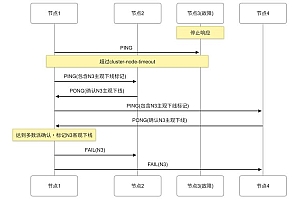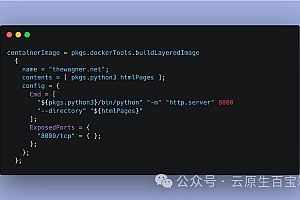位运算和数据结构的重要性显而易见,在编程界,它们的应用领域十分广泛,能够高效解决众多问题,对此,我们接下来将进行深入的研究与探讨。
位运算强大性能
位运算在计算机科学中表现卓越,它直接对二进制数中的位进行操作,因此其运行速度非常迅速。以设定哈希表容量为2的整数次幂为例,位运算能够轻松实现这一目标。以n的值为0 0011为例,当对n进行一次无符号右移操作后,原本位于11位的1变成了0,而原本位于10位的0则变成了1。随后,对这个新得的数据与n执行位或操作,再将所得的新值重新赋予n,以此来达成既定目标。这样做减少了计算的工作量,大大提高了程序运行的效率。
众多算法与程序经过位运算的优化,其性能显著增强。尤其是在处理大量数据时,位运算使得程序能够迅速完成任务,从而大大节省了时间和资源。比如,在那些对速度有极高要求的系统中,位运算更是成为了不可或缺的优化策略。
堆的高效能力
这种数据结构相当强大,从逻辑上来讲,它与树形结构有相似之处;而在实际应用中,它通常以动态数组的形式呈现。它特别擅长处理那些其他数据结构难以应对的问题。例如,在优先队列和排序算法的应用中,堆能够显著减少时间复杂度,从而使问题得以快速解决。
在众多应用场景中,堆结构的应用能够显著提升程序运行效率。比如在任务调度系统中,借助堆,我们能够迅速定位并处理优先级最高的任务,这弥补了其他数据结构在查找速度方面的不足。此外,堆在数据的添加和移除操作上同样表现出色,能够灵活适应不断变化的需求。
队列的特殊机制
队列是一种受限的线性结构,它只允许我们在其最前方进行删除操作,而在末尾进行插入操作。这种设计在众多场合都十分实用,例如在处理任务排队时。以银行排队系统为例,顾客需按照既定顺序依次等候,先到者将优先得到服务,这一流程与队列的工作原理相吻合。
队伍排列有序,坚守着先来后到的规矩,成功阻止了混乱和无序现象的出现。在众多服务器中,每个请求都依照队列的顺序逐一处理,这既保证了每个请求都能得到公正的对待,同时也提升了处理的速度。
循环队列空间利用
/**
* The array in which the elements of the deque are stored.
* The capacity of the deque is the length of this array, which is
* always a power of two. The array is never allowed to become
* full, except transiently within an addX method where it is
* resized (see doubleCapacity) immediately upon becoming full,
* thus avoiding head and tail wrapping around to equal each
* other. We also guarantee that all array cells not holding
* deque elements are always null.
*/
transient Object[] elements; // non-private to simplify nested class access
/**
* The index of the element at the head of the deque (which is the
* element that would be removed by remove() or pop()); or an
* arbitrary number equal to tail if the deque is empty.
*/
transient int head;
/**
* The index at which the next element would be added to the tail
* of the deque (via addLast(E), add(E), or push(E)).
*/
transient int tail;循环队列通过数组实现,合理利用了空间,其操作依赖于取模运算。当队尾指针达到数组的边界时,我们检查队头指针是否位于起始位置。通过这种方式,我们能够准确判断队列是否为空或已满。
private void allocateElements(int numElements) {
int initialCapacity = MIN_INITIAL_CAPACITY;
// Find the best power of two to hold elements.
// Tests "= initialCapacity) {
initialCapacity = numElements;
initialCapacity |= (initialCapacity >>> 1);
initialCapacity |= (initialCapacity >>> 2);
initialCapacity |= (initialCapacity >>> 4);
initialCapacity |= (initialCapacity >>> 8);
initialCapacity |= (initialCapacity >>> 16);
initialCapacity++;
if (initialCapacity >>= 1;// Good luck allocating 2 ^ 30 elements
}
elements = new Object[initialCapacity];
}许多嵌入式系统面临内存资源紧张的问题,因此循环队列的存储方式显得尤为重要。这种设计经过深思熟虑,能有效提升内存利用率。在数组中,仅存储数组容量减一的数据量,确保rear指针在循环一圈后不会与head指针相遇,以此避免两者发生混淆。
队列变量含义调整
优化front和rear变量的定义至关重要。front变量直接指向数组队列的首个元素,并且其初始值被设置为0;而rear变量则指向队列末尾元素之后的那个位置,同样地,它的初始值也是0。这样的改动使得对队列的操作更为直观易懂。
n |= (n >>> 1);
n |= (n >>> 2);
n |= (n >>> 4);
n |= (n >>> 8);
n |= (n >>> 16);在程序设计过程中,若持续运用此变量配置方式,能有效减少逻辑错误的产生概率。例如,在计算队列的实际数据量时,借助改进后的变量配置,我们能够精确得出结果。这种做法使得队列的操作流程更加规范且统一。
队列位置循环操作
对 tail 进行加一操作,然后与数组长度减一进行位运算,这样操作可以使 tail 指向循环队列中的下一个元素。这一结论是通过分析位运算以及队列的基本特性所得出的。在众多需要循环处理数据的系统中,这一步骤确保了队列数据的连续使用。
在网络数据包处理过程中,队列需要持续接收与发送数据,这一过程对于实现循环功能至关重要。借助位运算的合理应用,队列能够在不同环境下维持其稳定的运行状态。
/**
* Constructs an empty array deque with an initial capacity
* sufficient to hold 16 elements.
*/
public ArrayDeque() {
elements = new Object[16];
}
/**
* Constructs an empty array deque with an initial capacity
* sufficient to hold the specified number of elements.
*
* @param numElements lower bound on initial capacity of the deque
*/
public ArrayDeque(int numElements) {
allocateElements(numElements);
}
/**
* Constructs a deque containing the elements of the specified
* collection, in the order they are returned by the collection's
* iterator. (The first element returned by the collection's
* iterator becomes the first element, or front of the
* deque.)
*
* @param c the collection whose elements are to be placed into the deque
* @throws NullPointerException if the specified collection is null
*/
public ArrayDeque(Collection c) {
allocateElements(c.size());
addAll(c);
}在编程的实际操作里,大家是否有过利用位操作或巧妙地运用相关数据结构来解决问题的有趣经历?不妨为这篇文章点赞,并把它分享出去,我们同样非常期待在评论区看到大家的讨论和独到的观点!
/**
* Inserts the specified element at the end of this deque.
*
* This method is equivalent to {@link #addLast}.
*
* @param e the element to add
* @return {@code true} (as specified by {@link Collection#add})
* @throws NullPointerException if the specified element is null
*/
public boolean add(E e) {
addLast(e);
return true;
}
/**
* Inserts the specified element at the end of this deque.
*
*
This method is equivalent to {@link #add}.
*
* @param e the element to add
* @throws NullPointerException if the specified element is null
*/
public void addLast(E e) {
if (e == null)
throw new NullPointerException();
elements[tail] = e;
if ( (tail = (tail + 1) & (elements.length - 1)) == head)
doubleCapacity();
}
/**
* Doubles the capacity of this deque. Call only when full, i.e.,
* when head and tail have wrapped around to become equal.
*/
private void doubleCapacity() {
assert head == tail;
int p = head;
int n = elements.length;
int r = n - p; // number of elements to the right of p
int newCapacity = n << 1;
if (newCapacity < 0)
throw new IllegalStateException("Sorry, deque too big");
Object[] a = new Object[newCapacity];
System.arraycopy(elements, p, a, 0, r);
System.arraycopy(elements, 0, a, r, p);
elements = a;
head = 0;
tail = n;
}



















